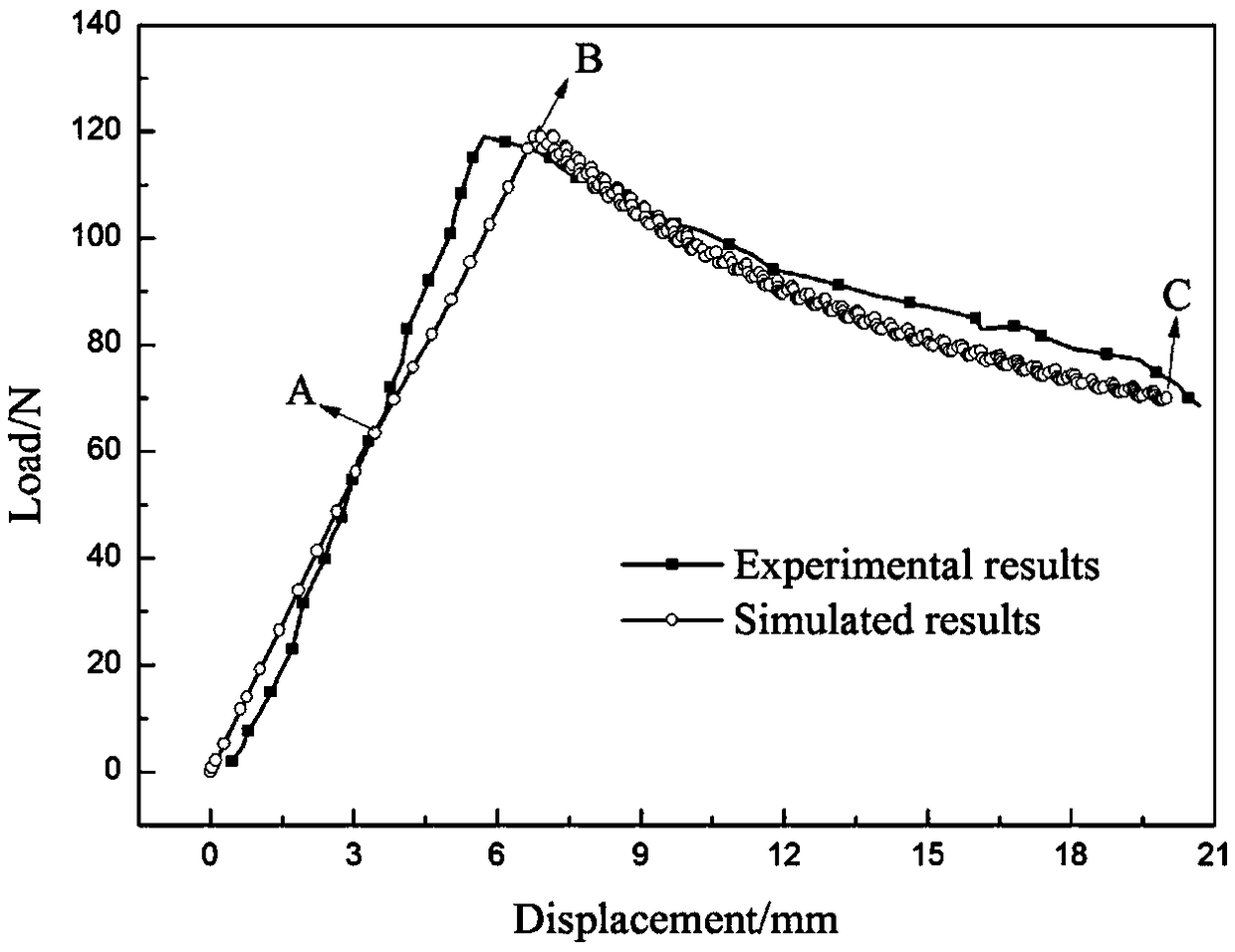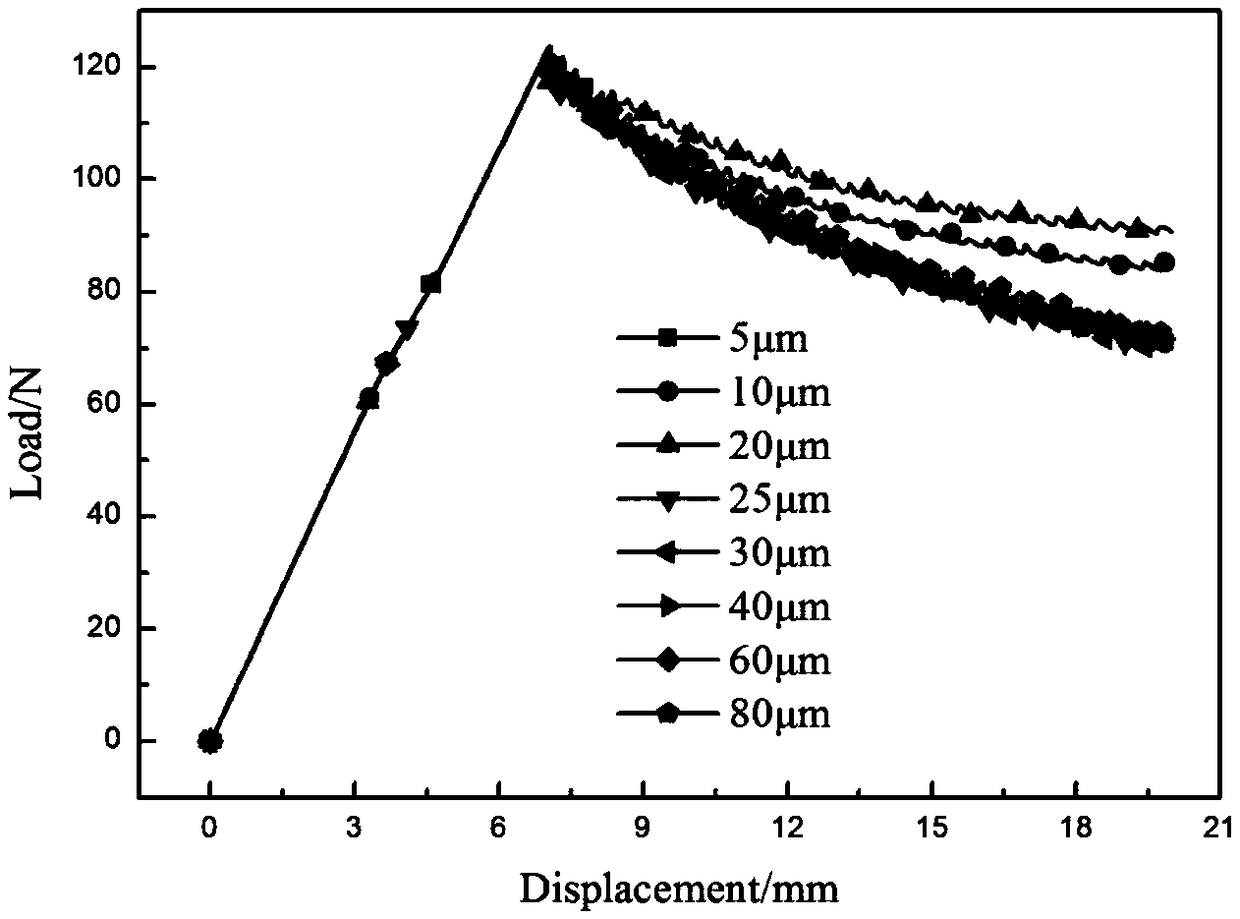Calculation method for damage and evolution failure of interlaminar toughened composite
A technology of toughened composite materials and calculation methods, which is applied in the field of calculation of damage and evolution failure of interlayer toughened composite materials, can solve the problems of inability to effectively characterize the physical properties of the toughened layer of non-woven fabrics, high cost, and long cycle time. Achieve the effect of shortening the development cycle and reducing the cost of research and development
- Summary
- Abstract
- Description
- Claims
- Application Information
AI Technical Summary
Problems solved by technology
Method used
Image
Examples
Embodiment Construction
[0019] The present invention will be further described in detail below in conjunction with the accompanying drawings.
[0020] according to figure 1 , taking the interlayer toughened carbon fiber reinforced epoxy resin-based composite material system of nylon non-woven fabric as an example, the matrix is 3266 epoxy resin, the layer is domestic U3160 unidirectional non-woven carbon fiber fabric, and the toughening material is nylon non-woven fabric , surface density is 20g / m 2 . The calculation steps of the optimum toughening layer thickness for this material system are as follows.
[0021] (1) Prepare standard specimens of carbon fiber reinforced epoxy resin-based composite materials toughened by interlayer nylon non-woven fabrics.
[0022] (2) The basic parameters of U3160-PNF / 3266 composites were obtained by standard tests.
[0023] (3) The mechanical properties of U3160-PNF / 3266 composite materials were tested by double cantilever beam bending test, the specific param...
PUM
 Login to View More
Login to View More Abstract
Description
Claims
Application Information
 Login to View More
Login to View More - R&D
- Intellectual Property
- Life Sciences
- Materials
- Tech Scout
- Unparalleled Data Quality
- Higher Quality Content
- 60% Fewer Hallucinations
Browse by: Latest US Patents, China's latest patents, Technical Efficacy Thesaurus, Application Domain, Technology Topic, Popular Technical Reports.
© 2025 PatSnap. All rights reserved.Legal|Privacy policy|Modern Slavery Act Transparency Statement|Sitemap|About US| Contact US: help@patsnap.com



